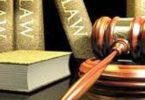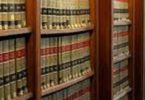Quiz on Indian Constitution:
Online Multiple Choice Questions Indian Constitution and Answers for Competitive Exams.
Ques. The Objective Resolution in the Constituent Assembly was moved by
(a) Dr Rajendra Prasad
(b) B.R. Ambedkar
(c) Jawaharalal Nehru
(d) Alladi Krishna swamy Iyer
Ques. The Constitution of India adopted the federal system from the Act of
(a) 1919
(b) 1935
(c) 1947
(d) 1909
Ques. “India that is Bharat shall be a union of states”. From which Constitution was adopted the words “union of states”?
(a) US
(b) France
(c) Swiss
(d) Canada
Ques. India has adopted ______ system.
(a) Parliamentary
(b) Presidential
(c) Dictatorship
(d) None of these
Ques. Article 32 stands suspended during an emergency under Article
(a) 352
(b) 356
(c) 360
(d) 362
Related: Elementary Mathematics Questions
Ques. As per Article 3, Parliament by law can extend, decrease, and abolish the territory and can change the boundary of any State. This statement is __
(a) True
(b) False
(c) Partly true
(d) None of these
Ques. Which Constitutional amendment incorporated the Fundamental Duties in the Constitution of India?
(a) 40th
(b) 44th
(c) 42nd
(d) 50th
Ques. The basic structure theory of the Constitution of India implies that
(a) Certain features of the Constitution are so essential to it that they cannot be abrogated
(b) Fundamental Rights cannot be abridged or taken away
(c) The Constitution cannot be amended except in accordance with the procedure prescribed in Article 368
(d) The Preamble of the Constitution cannot be amended
Ques. For the Indian citizenship _____ of the mother or father should have been born in the Indian Territory
(a) Anyone
(b) Both of them
(c) Anyone from mother’s family
(d) Anyone from relative’s family
Ques. The emergency provisions of the Constitution of India have been borrowed from
(a) German Constitution
(b) American Constitution
(c) French Constitution
(d) Irish Constitution
Related: Islamic question and answer
Ques. Migration from 1st March 1947 to 26/01/1950 and the migration from India to Pakistan after 26/01/1950 instead of Article 7, Indian Citizenship Act 1955 will be applied. This statement is ____.
(a) False
(b) True
(c) Partly true
(d) Partly false
Ques. Who said “the Preamble is the key to the Constitution”
(a) Dr B.R. Ambedkar
(b) Dr Rajendra Prasad
(c) Jawaharlal Nehru
(d) C. Rajagopalachari
Ques. Every person can enjoy Article 15, 16, and 19 of Indian Constitution whether they are citizens or not. This statement is ___
(a) False
(b) True
(c) Partly true
(d) None of these
Ques. Article 19 of the Constitution of India contains
(a) 9 Fundamental Freedoms
(b) 8 Fundamental Freedoms
(c) 7 Fundamental Freedoms
(d) 6 Fundamental Freedoms
Related: Basic economic concepts Multiple choice questions
Ques. As per Article 16, every citizen has ______ opportunity for employment.
(a) Equal
(b) Unequal
(c) Arrangement
(d) Provision
Ques. Article 352 of the Indian Constitution deal with
(a) centre-state relations
(b) Supreme Court
(c) state emergency
(d) national emergency
Ques. As per Article 19, there were __________ freedoms to citizens in original Constitution.
(a) 7
(b) 6
(c) 4
(d) 5
Ques. How many methods are there to amend the Constitution of India?
(a) 5
(b) 4
(c) 3
(d) 2
Related: Statement and Course of Action Questions
Ques. The constitution of India at the time of adopting had only Schedules
(a) 6
(b) 8
(c) 12
(d) 10
Ques. Equality before law and Equal protection of law have been modelled on the Constitution of
(a) Britain
(b) America
(c) Russian
(d) Switzerland
Ques. The basic structure theory of the Constitution of India implies that
(a) Certain features of the Constitution are so essential to it that they cannot be abrogated
(b) Fundamental Rights cannot be abridged or taken away
(c) The Constitution cannot be amended except in accordance with the procedure prescribed in Article 368
(d) The Preamble of the Constitution cannot be amended
Ques. In the Indian Constitution there are __ Lists.
(a) 2
(b) 3
(c) 4
(d) 5
Related: Kings and Queens of England quiz
Ques. In India, there is supremacy of Constitution whereas in England supremacy is of ______
(a) Constitution
(b) People
(c) Prime Minister
(d) Parliament
Ques. Which article of the constitution of India empower the President to take over the administration of a state on the basis of failure of constitutional machinery?
(a) 365
(b) 352
(c) 356
(d) 360
Ques. The idea of supremacy of Constitution was adopted from _____ Constitution.
(a) Russia
(b) Japan
(c) Ireland
(d) America
Ques. Freedom of expression is included in the article
(a) 15
(b) 19
(c) 21
(d) 22
Related: problems on LCM and HCF
Ques. Form of Constitution is __
(a) Federal
(b) Unitary
(c) Quasi federal
(d) Related to State machinery
Ques. Which article of the Constitution of India says “there shall be a council of Ministers with the Prime Minister at the head to aid and advice the President”?
(a) Article 74
(b) Article 75
(c) Article 79
(d) Article 80
Ques. __ of our country insists upon to implement the freedom given to every citizen by our Constitution
(a) Judiciary
(b) Administration
(c) Only executive body
(d) Welfare State
Ques. The Indian Constitution is an
(a) Enacted one
(b) evolved one
(c) unwritten one
(d) None of these
Related: Logarithm – Aptitude test
Ques. The main provisions for social, economical, and political justice are included in __
(a) Directive Principles
(b) Fundamental Principles
(c) Ideal Principles
(d) None of these
Ques. The Constitution Drafting Committee constituted by the Constituent Assembly consisted of
(a) 5 member
(b) 6 members
(c) 7 members
(d) 8 members
Ques. In Article 46, it has been informed to the State to try to protect the interest of other ____ people.
(a) Weaker
(b) Well to do
(c) Strong
(d) Capable
Ques. The Constitution of India consists of
(a) 390 articles
(b) 396 articles
(c) 395 articles
(d) 394 articles
Ques. India cannot favor State ___
(a) Religion
(b) Equality
(c) Equality
(d) Fraternity
Related: Letter Sequence test
Ques. The Constitution of India was adopted on
(a) 26th January 1950
(b) 26th January 1947
(c) 26th November 1949
(d) 26th June 1948
Ques. The _____ of India are having Sovereign power
(a) People
(b) Leaders
(c) Parliament
(d) Legislative Assembly
Ques. The procedure for amending the Constitution is in
(a) Article 368
(b) Article 360
(c) Article 367
(d) Article 371
Ques. Under which Article of the Constitution of India, the Governor of a state can resume a Bill for the consideration of the President
(a) Article 196
(b) Article 200
(c) Article 202
(d) Article 204
Related: names of South America countries and their capitals
Ques. The Concurrent list in the Constitution of India was adopted from
(a) Switzerland
(b) Australia
(c) Canada
(d) Irish
Ques. The word “procedure established by law” in the constitution of India have been borrowed from
(a) UK
(b) USA
(c) French
(d) Germany
Ques. The makers of the Constitution of India adopted the concept of Judicial Review from
(a) Russia
(b) Germany
(c) US
(d) Australia
Ques. The President of the Constituent Assembly was
(a) Maulana Abdul Kalam Azad
(b) Dr Rajendra Prasad
(c) Sardar Vallabhai Patel
(d) Dr BR Ambedkar
Related: Financial Knowledge Test
Ques. In a federal system the guardian of the Constitution is
(a) the Parliament
(b) the Judiciary
(c) the council of Ministers
(d) the National Security Advisor
Ques. Indian Constitution was adopted on ___
(a) 26-11-1949
(b) 26-01-1949
(c) 26-01-1950
(d) 26-12-1949
Ques. The Union Legislature in India is empowered
(a) Not to amend the basic structure of the Constitution
(b) To amend the basic structure of the Constitution
(c) To abrogate the basic structure
(d) None of these
Ques. Which article of the Constitution of India provides for co-operation between states?
(a) Article 32
(b) Article 360
(c) Article 14
(d) Article 263
Related: list of all US Presidents with pictures
Ques. The Advisory Jurisdiction of the Supreme Court was adopted from the Constitution of
(a) Germany
(b) US
(c) Australia
(d) Canada
Ques. There is distribution _____ between Union and State in our Constitution.
(a) of power
(b) of advice
(c) of provision
(d) power and advice
Ques. From among the following which amendment of the Constitution of India made “education to Children” as a Fundamental Duty?
(a) 86th
(b) 85th
(c) 42nd
(d) 72nd
Ques. India declared ___ State by our Constitution
(a) Republic
(b) Socialistic
(c) Capitalist
(d) Non-secular
Related: who is the vice President of India list
Ques. How many duties are included in the Constitution as Fundamental Duties?
(a) 10
(b) 11
(c) 9
(d) 6
Ques. In the beginning, the Constitution had ____ articles and ____ schedules.
(a) 295 – 8
(b) 395 – 8
(c) 295 – 9
(d) 395 – 2
Ques. The Directive Principles of State Policy in the Constitution of India was adopted from
(a) Irish
(b) Canada
(c) Germany
(d) Australia
Ques. Our Constitution is ____ and ______ compared to other countries of the world.
(a) Shorter – Descriptive
(b) Unwritten – Descriptive
(c) Most lengthiest and descriptive
(d) Short – Nutshell
Related: questions of MS Word
Ques. The Objective Resolution was adopted by the Constituent Assembly in
(a) January 1947
(b) July 1947
(c) August 1947
(d) May 1947
Ques. The Indian Constitution deals with the citizenship from Article 5-11 under
(a) Part I
(b) Part II
(c) Part III
(d) Part IV
Ques. In which part of the Constitution, the separation of executive and judiciary has been described?
(a) Preamble
(b) Fundamental rights
(c) Directive principles of state policy
(d) Seventh schedule
Ques. The Constitution of India is parliamentary because
(a) There is an elected President
(b) there is a bicameral legislature
(c) There is a Supreme Court
(d) the executive is responsible to the Legislature







Sir,Pl.furnish the key for above 60qustions
where I can get the right answer